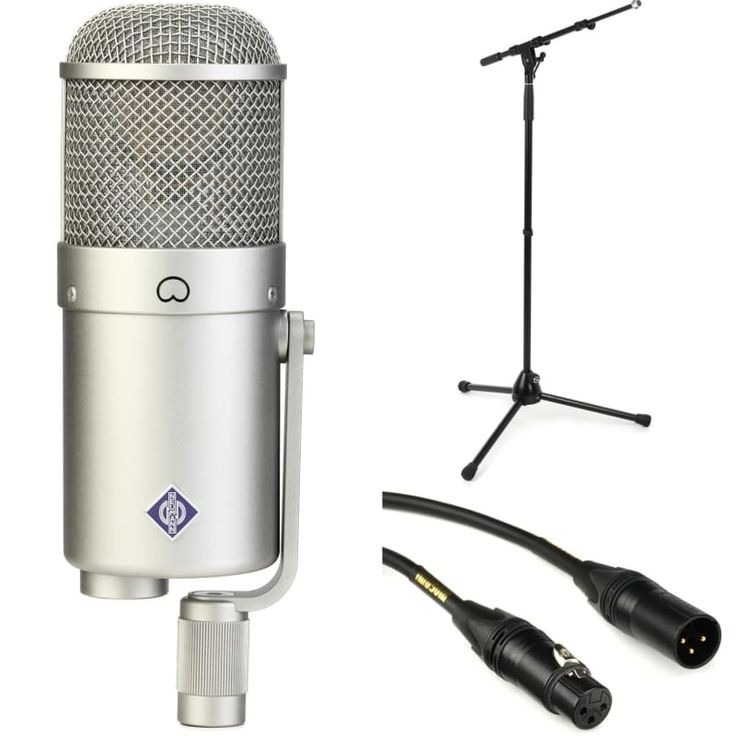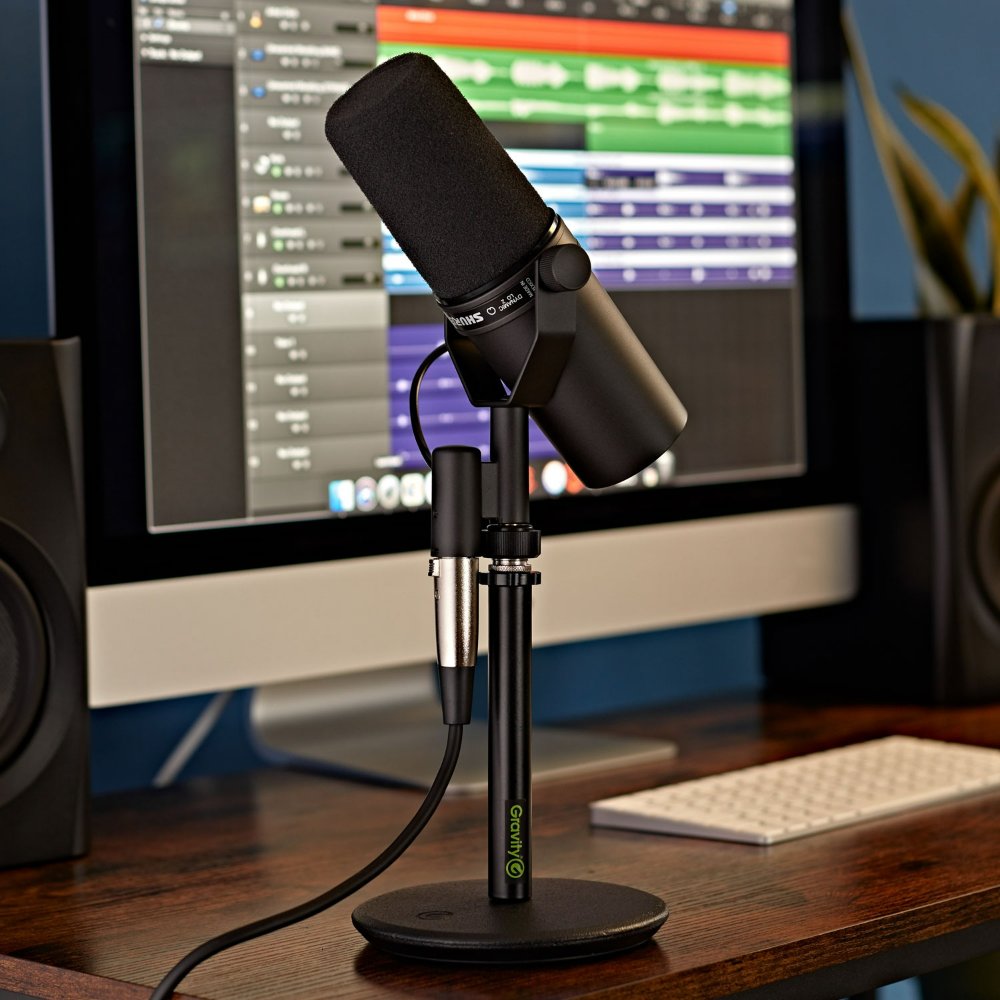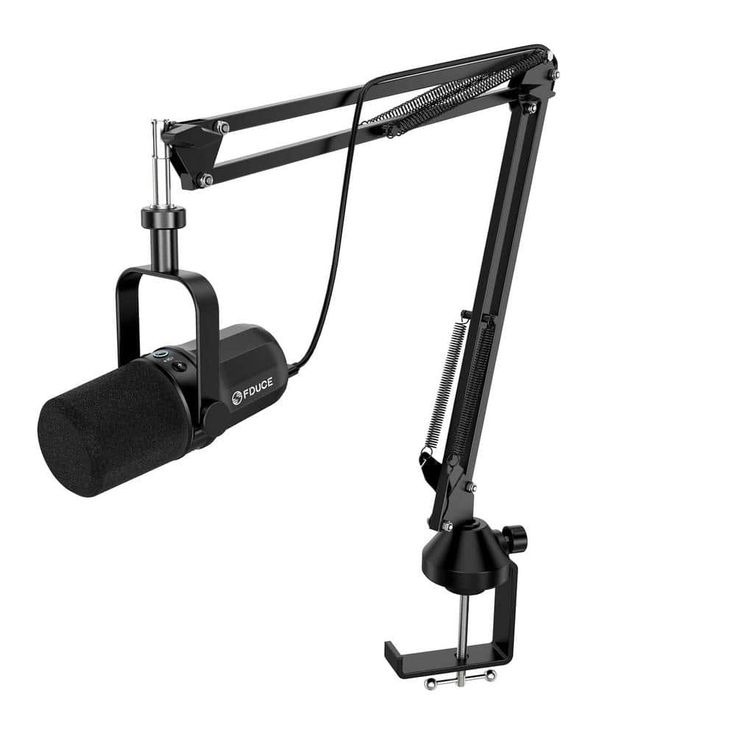Types of Podcast Mic Stands
Choosing the right type of podcast mic stand is crucial for your recording setup. Different types serve varied purposes and offer specific benefits. Here’s a look at the main types available.
Desk Stands
Desk stands are ideal for podcasters who record at a desk or table. They have a small base and typically stand on rubberized pads to reduce vibration. Desk stands are best for static recording setups where the position of the mic doesn’t need frequent adjusting.
Some desk stands come with adjustable height and tilt. This allows for better microphone positioning. Desk stands are a good fit for podcasters on a budget or with limited space.
Boom Arms
Boom arms attach to a desk or table with a clamp or mount. They offer greater flexibility than desk stands. A boom arm allows you to position the mic closer to you while freeing up desk space. This type is preferred by podcasters who need to move their microphone often during recording.
Boom arms are also helpful if you want to stand while recording. They can extend, tilt, and swivel, giving you full control over mic placement. Look for boom arms that can handle the weight of your microphone without sagging.
Floor Stands
Floor stands are best for podcasters who need the most mobility. They stand on the floor and often come with a heavy base for stability. Taller than desk stands, they can extend to different heights and angles. This type is common in professional studios and live performance settings.
Floor stands may take up more space and can be less portable. However, they offer unmatched versatility for dynamic recording situations. Some models have wheels for easier movement around the studio.
Each type of podcast mic stand serves a specific user’s needs and recording environment. Consider the level of adjustability, stability, and portability you need when choosing the right one for you. Use the type that matches the nature of your podcasting activities to enhance audio quality and ease of recording.

Key Features to Consider When Selecting a Mic Stand
Selecting the ideal podcast mic stand involves consideration of several key features. These ensure you have a stand that not only supports your microphone well but also enhances your podcasting experience. Let’s delve into the main features to look for.
Adjustability
A key feature to look for in a podcast mic stand is adjustability. This allows you to fine-tune mic height and angle to fit your posture and speaking style. An adjustable stand helps in achieving the right mic placement, crucial for clear audio. Look for stands with easy-to-use adjustment knobs or levers.
Stability
Stability is vital in a mic stand to prevent it from tipping over or vibrating during use. A stable stand has a solid base or a secure clamp that holds it firmly in place. This reduces the risk of microphone drops and audio disruptions. Check the stand’s weight capacity to ensure it can handle your mic.
Compatibility
Choose a stand that’s compatible with your microphone’s mount and weight. Not all stands fit all microphones, so it’s important to verify these details. Sometimes, you may need an adapter to connect your microphone to a specific stand type.
Portability
If you record in various locations, consider a stand’s portability. A portable stand is light, collapsible, and easy to set up. This is handy for podcasters who travel or prefer a flexible recording environment. Stands with carrying cases add an extra level of convenience.
Remember to balance these features with your specific needs. Whether you’re at a desk or on the move, pick a podcast mic stand that helps you produce the best possible audio quality.
The Importance of Mic Placement and Positioning
Good mic placement and positioning affect your podcast’s sound quality. They help reduce echoes and background noise. Proper positioning ensures your voice is clear and consistent in volume. Adjustable podcast mic stands can help achieve this.
Place your microphone close to you during recording. This captures your voice directly and limits external noises. A poorly placed mic can cause sound issues and affect listener satisfaction. Adjust the arm or height to match your sitting or standing position.
Keep the mic at a steady distance from your mouth. This prevents audio levels from fluctuating. Use a shock mount to further reduce unwanted sounds from vibrations. Angling the mic correctly can help avoid plosive sounds from ‘p’ and ‘b’ letters. Remember, small changes in mic placement can have a big impact on sound quality.
Invest time in testing different positions to find the best setup for your voice and style. An ideal position depends on you, your equipment, and your recording environment. Optimal mic placement and positioning contribute greatly to the professional sound of your podcast.

Top Recommended Podcast Mic Stands
Selecting from the wide array of podcast mic stands can be daunting. Whether for a home studio or professional use, I’ve curated a list that balances price and quality. Here are my top recommendations.
Budget-Friendly Options
When it comes to budget-friendly podcast mic stands, there’s no need to compromise on quality. Here are some affordable options that still deliver:
- The Neewer Adjustable Microphone Stand is a hit among podcasters starting out. Its desk clamp and adjustable boom arm provide flexibility without the high price tag.
- The AmazonBasics Tripod Boom Microphone Stand is another cost-effective solution. Its lightweight design makes it portable, yet it remains stable during use.
- Samson MK-10 Microphone Boom Stand offers exceptional value. It combines ease of use with a sturdy design, perfect for those on a tight budget.
These stands provide the essential features like adjustability and stability, crucial for good sound quality, without breaking the bank.
Premium Picks
For those willing to invest a bit more for top-tier quality, these premium stands are worth every penny:
- The Rode PSA1 Swivel Mount Studio Microphone Boom Arm is a favorite for serious podcasters. Its seamless movement and solid build make it a reliable choice.
- The Heil Sound PL-2T Overhead Broadcast Boom is known for its quiet operation and sturdy construction. It’s a professional-grade boom that’s versatile and dependable.
- Ultimate Support MC-40B PRO Microphone Stand brings an innovative approach with its quick-release clutch and stable base. It’s an excellent pick for podcasters seeking premium features.
These options excel in all aspects including ease of adjustment, overall stability, and long-lasting durability. They represent a good investment for those prioritizing sound quality and versatility.
How to Set Up Your Podcast Mic Stand
Setting up your podcast mic stand correctly is vital for optimal sound quality. Here’s a straightforward guide to get you started.
- Choose the Right Location: Ensure your mic stand is in a quiet, echo-free area to record clean audio.
- Assemble Stand Correctly: Follow the manufacturer’s instructions to put together your mic stand. Tighten all screws and knobs.
- Attach Microphone: Secure your microphone to the stand. If using a shock mount, attach it first.
- Adjust Height and Angle: Position the mic stand so the microphone is at mouth level when seated or standing.
- Test Different Positions: Speak into the mic and listen to the playback. Make adjustments to avoid plosive sounds and background noise.
- Ensure Stability: Check that the stand is stable and doesn’t wobble. A solid base prevents accidents and noise interference.
- Cable Management: Tidy up cables to prevent tripping hazards and reduce visual clutter.
By following these steps, your podcast mic stand will be set up for recording success.

Maintenance and Care Tips for Mic Stands
Maintaining your podcast mic stand is essential for longevity and performance. Below are some practical tips to keep it in top condition.
- Inspect Regularly: Check your stand often for any loose parts or signs of wear. Tighten screws and bolts as needed.
- Clean Gently: Dust your mic stand regularly with a soft, dry cloth. Avoid harsh chemicals that can damage the finish.
- Avoid Over-Tightening: When adjusting, tighten knobs just enough to hold the stand’s position. Over-tightening can strip threads or damage parts.
- Use with Care: Handle the stand gently when setting up or packing away. Rough handling can lead to bends or breaks over time.
- Keep Dry: Protect your stand from moisture. If it gets wet, dry it immediately to prevent rust or corrosion.
- Store Safely: When not in use, keep your stand in a safe place to avoid accidental drops or pressure that can warp it.
- Follow Weight Limits: Do not overload the stand with too heavy a microphone. This keeps the stand stable and prevents collapses.
Simple care and attention can prolong the life of your podcast mic stand. Regular maintenance helps avoid issues that can disrupt recordings and lead to unnecessary costs.
Common Mistakes to Avoid When Choosing a Mic Stand
Choosing the right podcast mic stand is essential for quality recordings. However, it’s easy to make mistakes that can affect your podcast. Here are common pitfalls to avoid:
Not Checking Compatibility
One common error is not verifying if the stand fits your microphone’s mount or weight. Always check specifications or use an adapter if necessary.
Overlooking Stability Needs
Don’t underestimate the importance of a stable stand. A stand that’s too light can tip over easily, disrupting recordings. Ensure it has a solid base or firm clamp.
Ignoring Adjustability
A stand that’s not adjustable may force you into uncomfortable positions. This can cause poor sound quality and strain. Choose a stand with easy height and tilt adjustments.
Neglecting Space Considerations
Remember your recording environment’s space. Large floor stands might not fit in a small studio. Desk stands or boom arms could be better options.
Forgetting About Portability
If you record in various locations, a heavy stand is impractical. Opt for a lightweight and collapsible stand if you travel or move around a lot.
Skimping on Quality for Price
While budget constraints are real, don’t go for the cheapest option without assessing quality. A broken stand could cost more in the long run.
Disregarding Ease of Setup
A complex setup can waste valuable recording time. Look for a stand that’s easy to assemble and adjust.
By avoiding these mistakes, you’ll select a podcast mic stand that meets your needs and ensures a smooth recording process.